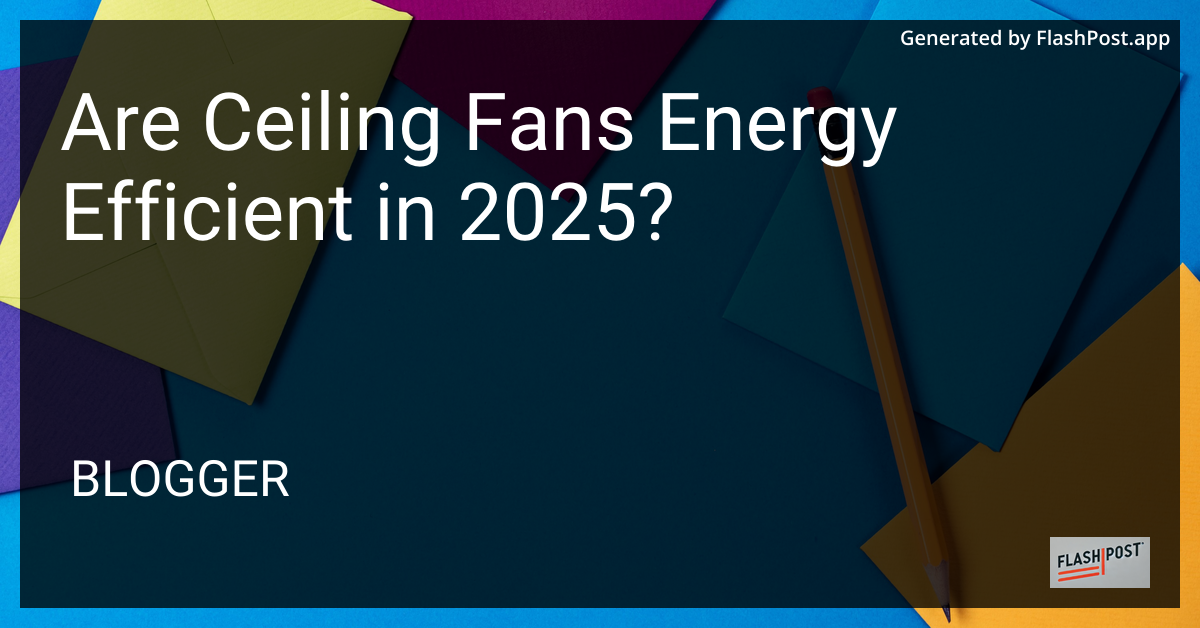Are Ceiling Fans Energy Efficient in 2025?

Are Ceiling Fans Energy Efficient in 2025?
In today’s environmentally conscious world, energy efficiency is more important than ever. As we step into 2025, the question arises: are ceiling fans an energy-efficient option for cooling and air circulation in our homes?
The Evolution of Ceiling Fan Technology
Ceiling fans have come a long way in terms of design and technology. Modern ceiling fans are built to be both functional and energy efficient. They consume less energy compared to traditional cooling systems, such as air conditioners, making them a viable option for those looking to reduce their carbon footprint.
Understanding Energy Efficiency of Ceiling Fans
Low Energy Consumption: Ceiling fans, especially those produced with energy-saving technologies, use significantly less power than air conditioning units. A standard ceiling fan typically uses about 15-90 watts, whereas an air conditioner can consume anywhere from 500 to 1500 watts depending on the model and setting.
Enhanced Motor Technology: Many ceiling fans manufactured in 2025 come equipped with DC motors, which use less electricity and are quieter compared to AC motors. This advancement contributes substantially to their energy efficiency.
Smart Features: The integration of smart technology in ceiling fans allows for features like scheduling, remote control, and even smartphone connectivity. This ensures they are used optimally, further enhancing their efficiency. Find out more about how you can control multiple ceiling fans with one remote.
Benefits Beyond Cooling
Apart from being energy-efficient, ceiling fans offer several other benefits:
Air Circulation: Ceiling fans improve air circulation, making rooms feel fresher and more comfortable without drastically reducing the temperature. Curious about how effective they are at cooling? Check out our article on ceiling fans room cooling.
Reversible Motor Feature: This feature allows the fan to be used in both summer and winter. In summer, fans cool the room, while in winter, they can circulate warm air, making heating systems more efficient.
Potential Savings
Switching to ceiling fans could lead to significant savings in electricity bills. By reducing the dependency on air conditioning, households can see a noticeable drop in energy consumption. Ceiling fans are an upfront low-cost investment that pays off over time through utility savings.
Conclusion
As we evaluate our energy choices moving into 2025, ceiling fans stand out as an energy-efficient and cost-effective option for maintaining comfortable indoor climates. Their advancements in technology, coupled with their role in reducing energy consumption, make them a smart choice for anyone looking to make an eco-friendly change.
By integrating modern-day functionalities with classic designs, ceiling fans continue to balance aesthetics and performance, ensuring they remain a staple in energy-efficient home solutions.
Comments
Post a Comment